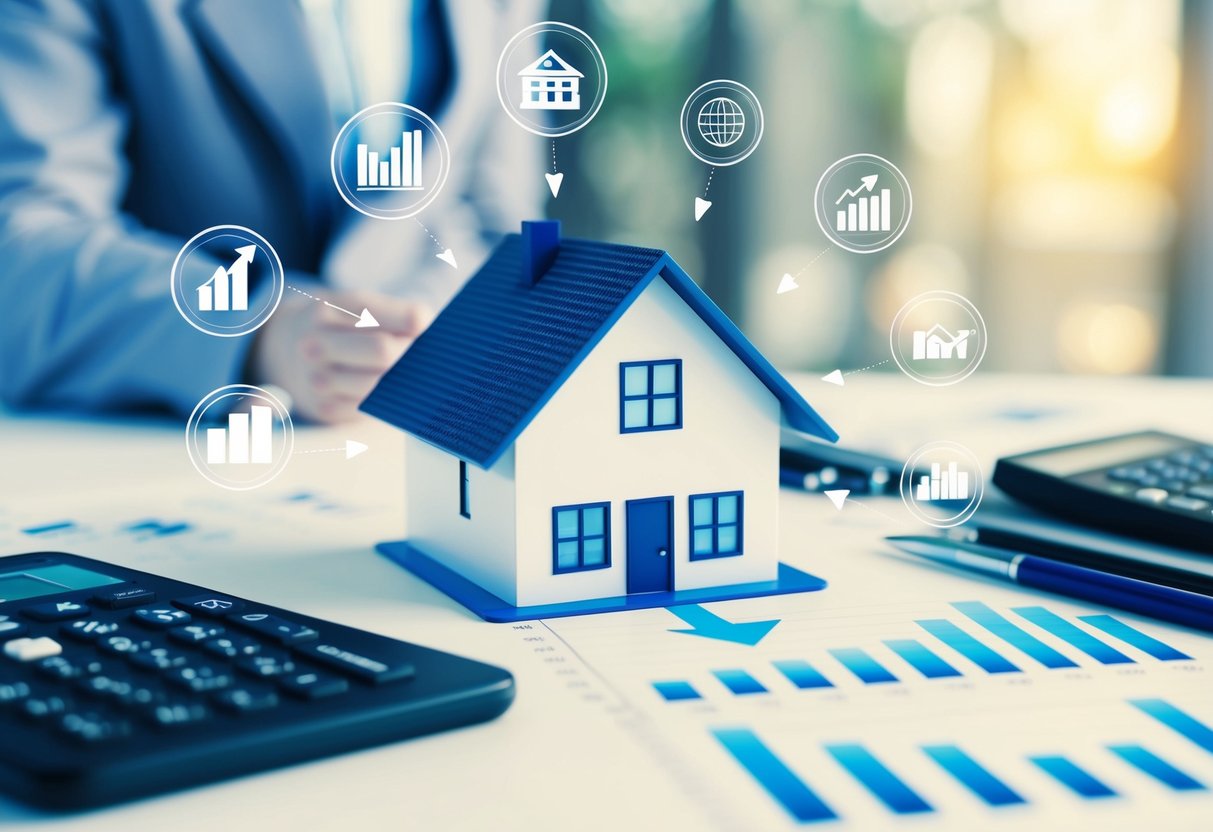Desktop valuation is a modern approach to determining the value of a property by leveraging publicly available data and advanced technology. With the increasing availability of information online, desktop valuations have gained popularity among property buyers, sellers, and lenders. This method provides a cost-effective and efficient means of estimating property values without the need for a physical inspection.
A desktop valuation is performed by a certified valuer who analyzes various factors such as recent property sales, comparable property listings, and market trends in the area. The valuer then uses their expertise and specialized tools to generate a reliable estimate of the property’s value. Although not as comprehensive as a full valuation, desktop valuations are often sufficient for initial assessments, refinancing purposes, or property investors seeking market insights.
Key Takeaways
- Desktop valuation is an efficient method to estimate property value using online data and expert analysis
- Certified valuers consider factors such as comparable listings and market trends in their assessment
- Though less comprehensive than full valuations, desktop valuations can serve various purposes, including initial assessments and refinancing.
Definition of Desktop Valuation
A desktop valuation is a computer-generated estimate that determines the value of a property using publicly available data. It is a quicker and cost-effective method compared to a full property valuation, as it does not require a physical inspection by a valuer. By analysing relevant sales in the area, comparable property listings, and other property data, a desktop valuation provides an estimated value for the property in question.
You might come across desktop valuations in situations where the lending risk is considered low, such as loans with a low loan-to-value ratio (LVR). In these cases, lenders might prefer to use a desktop valuation as it saves time and resources compared to a full valuation process.
However, since desktop valuations rely on publicly available data, they may not account for hidden factors affecting the property’s value, such as interior renovations, or specific local market trends. Consequently, the accuracy of a desktop valuation may not always be as reliable as that of a full property valuation carried out by a certified valuer.
In summary, a desktop valuation is a time-efficient and cost-effective method used by some lenders to estimate a property’s value, especially when dealing with low-risk loans. While this approach has its benefits, it is essential to acknowledge the limitations compared to a full property valuation.
Benefits of a Desktop Valuation
One of the main advantages of a desktop valuation is that it saves time and money for both you and the lender. Since it doesn’t require a valuer to physically visit the property, the process is faster and more cost-effective. This is particularly beneficial if you need a quick estimate of a property’s value.
Additionally, desktop valuations can provide a convenient and accurate way to gauge the market value of a property. By making use of data from various sources, such as historical sales records and recent market trends, you can acquire valuable insights into a property’s worth without having to rely solely on the opinion of a valuer.
Another benefit of a desktop valuation is the potential for reduced risk of human error or bias in the valuation process. Since the information is derived from automated systems and databases, the outcome is less likely to be influenced by personal perceptions or preferences, resulting in a more objective and reliable valuation.
However, it’s important to recognise the limitations of a desktop valuation. Given that it doesn’t involve a physical inspection of the property, there may be certain aspects of the property that are not accounted for in the valuation. This could lead to less accurate results in some cases, so weighing the pros and cons of a desktop valuation is crucial.
In summary, a desktop valuation offers a quick, cost-effective, and more impartial way to determine the value of a property, making it an attractive option for certain situations. As long as you are aware of its limitations and trust the data used in the process, a desktop valuation can be a valuable tool in your property investment journey.
Types of Valuations
Bank Valuation
When applying for a mortgage or refinancing your home loan, your bank or lender may request a property valuation. This is essential to determine your property’s market value, which your bank will use as security for your loan. There are different valuation methods available, depending on your requirements and your lender’s preferences.
Property Valuations
Property valuations fall into three main categories: desktop valuations, kerbside valuations, and full valuations. The choice of valuation type depends on factors such as loan-to-value ratio (LVR) and risk assessment.
Electronic Valuations
Electronic valuations, also known as automated valuations, are a type of desktop valuation where data from a research company like CoreLogic is used to determine a property’s value. These valuations are generally faster and more cost-effective than traditional options and are commonly used for low-risk loans.
Desktop Valuation Report
A desktop valuation is a process that involves estimating a property’s worth based on available data and documentation, without personally inspecting the asset. Desktop valuations are suitable for low-risk transactions with a low LVR and are generally less expensive than other methods. However, they may not be as accurate or widely accepted by lenders due to the lack of physical inspection.
Kerbside Valuations
Kerbside valuations, also known as drive-by valuations, provide a higher level of accuracy compared to desktop valuations. These involve the valuer driving past the property and assessing it from the outside, without entering the premises. They are commonly used for low to medium risk transactions and are more accepted by lenders than desktop valuations.
Full Valuations or Professional Valuations
For high-risk transactions or when a more accurate estimation is required, a full or professional valuation is preferred. This type of valuation involves a thorough on-site assessment by a qualified valuer who inspects the asset’s interior and exterior, considers factors such as its condition, location, and any improvements or special features, and then provides a comprehensive report. While full valuations are more costly and time-consuming, they are considered the most reliable and widely accepted by lenders and financial institutions.
Choosing the right type of valuation depends on your specific needs, your lender’s requirements, and the level of risk associated with the transaction. Always ensure you consult with your bank or lender to understand which valuation method is suitable for your circumstances.
Valuations from an Independent Valuer
When you require an accurate property report, a valuation from an independent valuer is an excellent option. Independent valuers are professionals who are not affiliated with any lender, buyer, seller, or agent involved in the transaction. This ensures that their assessment is unbiased and objective, providing a true reflection of the property’s market value.
There are various purposes for which you might seek a valuation from an independent valuer. These can include dispute resolution, insurance claims, or legal matters. By being impartial and knowledgeable, independent valuers can deliver a trustworthy report to help you make well-informed decisions.
To maintain a high standard of accuracy, independent valuers use a range of data sources and industry expertise to analyse comparable properties and market trends. This thorough analysis guarantees that the resulting valuation reflects the most reliable estimate of the property’s current value.
In conclusion, when you need a precise and impartial property valuation, engaging an independent valuer is an ideal choice. Their expertise and neutrality ensure that you receive a comprehensive and accurate property report, allowing you to confidently make the right decisions for your specific situation.
How to Obtain a Desktop Valuation
To obtain a desktop valuation, there are a few paths you can take. First, you can request one from your lender if they offer this service for your loan type and property type. Lenders sometimes provide desktop valuations as a quick and cost-effective alternative to full valuations, especially for low-risk loans or when refinancing.
Alternatively, you can order a desktop valuation through an online service provider. These providers usually use electronic valuation systems to generate an estimate based on data from various sources, such as recent sales, market trends, and property features. Some real estate agents and mortgage brokers also offer access to desktop valuation tools as part of their services, which can save you time and effort when assessing a property’s value.
Lastly, there are free online tools that provide indicative estimates based on limited data sourced from public records or listings. While these tools can be less accurate than paid services, they may still be useful as a starting point or for general information purposes.
Keep in mind, the cost and availability of a desktop valuation may differ depending on the provider, the location, and the purpose. Make sure to verify the associated fees, coverage, and accuracy of the chosen method to ensure it meets your requirements.
What is Included in a Desktop Valuation
A desktop valuation is an automated property valuation method that relies on data and software to assess the value of your property. Typically used for lower-risk lending under 80% Loan to Value ratio (LTV), desktop valuations can be both quick and accurate, depending on the information available. Let’s explore what aspects are included in a desktop valuation.
Sales Data: One of the primary sources of data for a desktop valuation is recent sales data. This includes details on sales transactions of properties similar to yours in the vicinity, which allows valuers to assess the comparative value of your property.
Location: The location of your property also plays an important role in determining its value. Desktop valuations take into account the attributes of your neighbourhood, such as proximity to amenities, schools, transport connections, and other local factors that may affect property values.
Up-to-Date Sales Data: Ensuring accurate and timely sales data is crucial in the desktop valuation process. Valuers rely on up-to-date information from research companies like CoreLogic, which helps them make the most informed decisions regarding property values.
Keep in mind that while a desktop valuation offers a convenient and speedy alternative to a full physical inspection, it is not always as reliable. Factors such as the condition of your property, any recent renovations or extensions, and unique features that may not be captured by data points can impact the final valuation. For this reason, a full valuation performed by a certified valuer may be needed in certain circumstances to ensure the most accurate assessment of your property’s worth.
In conclusion, a desktop valuation combines sales data, location, and up-to-date sales data to provide an automated assessment of a property’s value. While it can be a helpful tool for lower-risk lending, it may not always capture all relevant factors that impact a property’s value. Consider your specific situation and requirements when deciding between desktop valuation and a full valuation.
Calculating the Value of a Property Through a Desktop Valuation
When you want to calculate the value of a property, using a desktop property valuation can be a convenient and efficient method. This type of valuation utilises an Automated Valuation Model (AVM) to determine an estimate based on available data.
To start your desktop property valuation, you’ll need to gather relevant information on comparable sales and properties in the area. Look for houses with similar characteristics such as size, age, location, and overall condition. The more comparable properties you have, the more accurate your desktop valuation will be.
The AVM utilises various data sources, including recent sales, property listings, and other market data to estimate the property value. Keep in mind that a desktop property valuation is meant to provide you with a general estimation and might not factor in unique features or recent improvements that could affect the property’s actual value.
Using a desktop property valuation can be advantageous due to its speed and convenience, as it doesn’t involve a physical property inspection. However, it’s worth noting that this method has limitations as it relies heavily on available data, which might not always be up-to-date or comprehensive.
In summary, a desktop property valuation is a useful tool to assess the value of a property. By comparing similar properties and analysing available market data, you can gain a general understanding of a property’s estimated value. While not as accurate as a physical inspection, it’s a time-efficient and cost-effective way to gather information for decision-making purposes.
Frequently Asked Questions
What is the process for obtaining a desktop valuation?
To obtain a desktop valuation, you simply need to provide basic property information, such as the property’s address and any relevant details. The valuer then uses advanced data analysis tools, like CoreLogic’s platform, to gather comparable sales data and other property factors from public records and market trends. Using this information, they estimate the property value without physically visiting the site.
How do banks make use of desktop valuations?
Banks and other lenders use desktop valuations mainly for loan assessments and refinancing. It helps them determine the value of a property quickly and without the need for an on-site inspection. This allows them to decide whether to approve or decline a loan application based on the property value and the borrower’s ability to repay the loan.
What are the benefits of CoreLogic Desktop valuations?
CoreLogic Desktop valuations offer several advantages, such as:
- Quick and cost-effective assessment compared to traditional on-site valuations
- Access to extensive property data, including recent sales and market trends
- Consistent and objective estimation based on relevant market information
How accurate are desktop valuations compared to on-site inspections?
Accuracy of desktop valuations depends on the quality and completeness of the data used in the analysis. While it can provide a good estimation, it may not capture certain property features or recent improvements that can affect the valuation. On-site inspections provide a more detailed and accurate assessment since the valuer physically examines the property.
What factors influence desktop valuations?
Factors affecting desktop valuations include property location, size, age, number of bedrooms and bathrooms, local market trends, and recent comparable sales. Desktop valuations use these factors combined with advanced data analytics to estimate the property value.
Are there limitations to desktop valuations in the property market?
While desktop valuations offer several advantages, they do have limitations, such as:
- Inability to inspect the property’s condition or unique features that could impact the value
- Dependence on the accuracy and completeness of available data
- Possible variations in the estimated value when compared to an on-site inspection
Despite these limitations, desktop valuations can still serve as a useful tool for quickly estimating property values in the Australian market. However, a full valuation may be necessary for certain situations or when more accurate property data is required.









